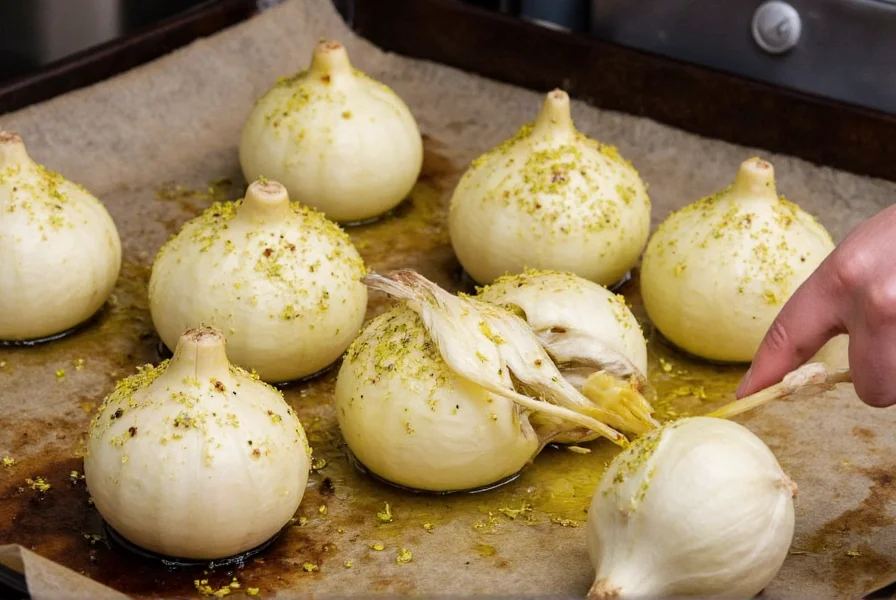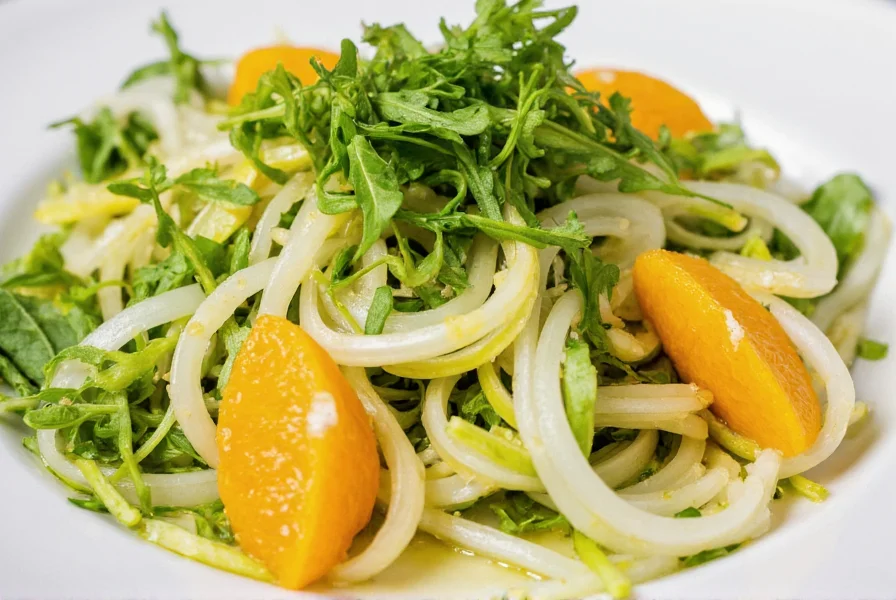Fennel (Foeniculum vulgare) stands as one of the most versatile yet underutilized ingredients in modern cooking. This aromatic herb, native to the Mediterranean but now grown worldwide, offers three distinct edible components that each bring unique culinary possibilities to your kitchen. Understanding how to properly select, prepare, and cook with each part of the fennel plant transforms this often-overlooked vegetable into a star ingredient that elevates countless dishes.
Selecting and Storing Fresh Fennel
When choosing fennel at the market, look for firm, heavy bulbs with crisp, bright green fronds. Avoid bulbs with brown spots, splits, or signs of flowering, as these indicate age and potential toughness. The stalks should feel solid when gently squeezed. For optimal freshness, store fennel wrapped in a damp paper towel inside a plastic bag in your refrigerator's crisper drawer. Properly stored, fennel bulbs maintain quality for 7-10 days, while the fronds last 3-5 days.
Preparing Fennel: A Step-by-Step Guide
Proper preparation unlocks fennel's culinary potential. Start by trimming the stalks about an inch above the bulb and cutting off the root end. Remove any tough or discolored outer layers. For raw applications like salads, slice the bulb thinly using a mandoline or sharp knife. When cooking with fennel bulb for roasted fennel recipes, cut into wedges or thick slices to prevent disintegration during cooking. The feathery fronds can be chopped finely and used as a fresh herb throughout cooking and as a garnish.
| Fennel Component | Preparation Method | Best Cooking Applications |
|---|---|---|
| Bulb | Trim stalks and root, remove tough outer layer, slice or chop | Roasting, grilling, sautéing, braising, raw in salads |
| Fronds | Chop finely like fresh herbs | Garnish, compound butters, salad dressings, pesto, fish dishes |
| Seeds | Use whole or crushed | Breads, sausages, spice rubs, marinades, tea, desserts |
Mastering Fennel Cooking Techniques
Each cooking method transforms fennel's flavor profile differently. When learning how to cook with fennel bulb, understand that raw fennel offers a crisp texture and pronounced anise flavor that works beautifully in salads with citrus and olive oil. Roasting fennel brings out its natural sweetness and creates tender-crisp results when cooked at 400°F (200°C) for 25-30 minutes. Sautéing sliced fennel in olive oil with garlic creates a flavorful base for pasta dishes or as a side vegetable. Grilling fennel wedges imparts a smoky dimension that complements seafood and poultry exceptionally well.

Perfect Flavor Pairings for Fennel
Understanding fennel flavor pairings elevates your cooking significantly. The bulb harmonizes with citrus (especially orange), tomatoes, olives, and seafood. Fennel seeds enhance sausage making and pair beautifully with pork, apples, and warm spices like cinnamon. For vegetarian dishes, combine roasted fennel with root vegetables, lentils, or chickpeas. The fronds work wonderfully with creamy sauces, egg dishes, and as a finishing touch on soups. When creating fennel seed recipes, balance the licorice notes with acidic elements like lemon juice or vinegar to prevent overwhelming the palate.
Delicious Fennel Recipe Ideas
Transform your meals with these practical applications of fennel. For a simple side dish, try roasting fennel wedges with olive oil, lemon zest, and black pepper until caramelized. Incorporate thinly sliced raw fennel into a citrus salad with arugula, orange segments, and a lemon vinaigrette. Create a flavorful fennel and potato soup by sautéing chopped bulb with onions, then simmering with broth and potatoes until tender. When making what to cook with fennel for dinner, try stuffing fish with fennel fronds and lemon slices before baking. For bread enthusiasts, add crushed fennel seeds to focaccia or dinner rolls for an aromatic twist.

Common Mistakes to Avoid When Cooking with Fennel
Many home cooks make preventable errors when using fennel. Don't discard the fronds—they're flavorful and versatile. Avoid overcooking fennel bulb, which turns it mushy rather than tender-crisp. When using fennel seeds, remember they're potent; start with 1/4 teaspoon per serving and adjust to taste. Don't confuse fennel with celery or茴香 (star anise)—they're different ingredients with distinct flavor profiles. When preparing fennel for raw applications, slice it paper-thin for the best texture. Finally, don't hesitate to use all parts of the plant; proper fennel preparation maximizes both flavor and reduces food waste.
Conclusion
Mastering cooking with fennel opens up a world of culinary possibilities that can transform ordinary dishes into extraordinary creations. By understanding how to properly select, store, and prepare each component of the fennel plant, you'll discover why professional chefs prize this versatile ingredient. Whether you're exploring fennel cooking techniques for the first time or looking to expand your repertoire with fennel seed recipes, this aromatic herb offers endless opportunities to enhance your cooking with its unique flavor profile and textural qualities. The key to success lies in treating each part of the fennel plant appropriately and understanding how its flavor transforms through different cooking methods.
Frequently Asked Questions
Can you eat all parts of the fennel plant?
Yes, the entire fennel plant is edible. The bulb can be eaten raw or cooked, the feathery fronds work as a fresh herb in salads, dressings, and as garnish, and the seeds serve as a potent spice. Even the stalks can be used in stocks or as a grilling bed for fish, though they're typically tougher than the bulb.
How do you reduce the licorice flavor of fennel when cooking?
Cooking transforms fennel's flavor, significantly reducing the licorice notes. Roasting, grilling, or braising brings out natural sweetness while mellowing the anise flavor. Pairing fennel with acidic ingredients like lemon juice or vinegar also balances the flavor profile. For raw applications, slice fennel very thinly and let it sit in citrus-based dressing for 15-20 minutes to mellow the flavor.
What's the difference between fennel bulb and Florence fennel?
There is no difference—Florence fennel is simply another name for the fennel bulb commonly sold in grocery stores. This variety has been cultivated to develop a large, bulbous base, distinguishing it from wild fennel which primarily produces seeds and feathery fronds with minimal bulb development.
Can you substitute fennel seeds for fresh fennel in recipes?
Not directly, as they have different flavor intensities and textures. One teaspoon of fennel seeds generally equals the flavor of one medium fennel bulb, but they won't provide the same texture. For best results when substituting, use 1/4-1/2 teaspoon crushed fennel seeds per bulb called for in the recipe, and consider adding celery or茴香 for texture if needed.
How do you prevent fennel from turning brown after cutting?
Like apples or potatoes, cut fennel can oxidize and turn brown. To prevent this, place sliced fennel in a bowl of cold water with a tablespoon of lemon juice or vinegar. The acid slows the oxidation process. For salads, simply toss the cut fennel with your dressing immediately, as the oil and acid in the dressing will protect it from browning.











 浙公网安备
33010002000092号
浙公网安备
33010002000092号 浙B2-20120091-4
浙B2-20120091-4